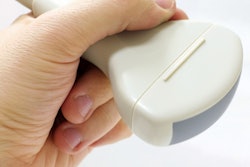Monday, November 26 | 11:50 a.m.-12:00 p.m. | SSC06-09 | Room N229
How effective is shear-wave elastography (SWE) for assessing liver fibrosis in patients with chronic disease? Very, according to findings being presented on Monday by U.K. researchers.Presenter Dr. Cheng Fang of King's College Hospital NHS Foundation Trust in London will share results from a study conducted to assess the diagnostic performance of SWE and serum markers (using an aspartate aminotransferase-to-platelet ratio index [APRI] measure), with liver biopsy data as the reference standard. Liver biopsy data were graded using the Ishak histologic fibrosis scoring framework.
The study included 169 patients with chronic liver disease. Fang's group performed receiver operating characteristic (ROC) analysis to evaluate the diagnostic accuracy of SWE and serum marker data for predicting significant (Ishak score, 3) and severe cirrhosis/liver fibrosis (Ishak score, 5).
Fang and colleagues found good correlation between SWE, APRI, and Ishak stage (p ≤ 0.001). The group noted the following:
- The areas under the ROC curve (AUC) for SWE and APRI were 0.86 and 0.89, respectively, for diagnosing significant fibrosis (Ishak score, 3); when combined, their AUC was 0.93, superior to SWE alone.
- SWE proved superior to APRI for predicting severe fibrosis/cirrhosis (Ishak score, 5), with an AUC of 0.98 versus 0.85 for APRI.
SWE is superior to serum markers for predicting severe fibrosis/cirrhosis and is comparable to serum markers for significant fibrosis, according to Fang and colleagues.
"[SWE] has excellent diagnostic accuracy for predicting cirrhosis," the team concluded.




















